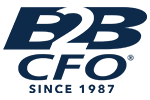
5 Types of Growth Your Business Should Avoid
Posted on December 14, 2022 by Peggy Head
Perhaps the headline of this article has surprised you—and that in itself is not too surprising. More often than not, growth is taught to be equivalent with success, profits and progress.
A growing business is what most CEOs and small business owners dream of, but what isn’t talked about enough is that there is such a thing as bad growth. Types of Growth:
Organic business growth is accomplished through natural expansion, whether it be new offered products or another store opening because of the original store’s sales. Organic scaling consists of a business simply doing well—but this isn’t a long-term strategy. Strategic: Strategic growth is often made after the organic growth has played a role in the business expanding. This is because organic growth can provide the funds and the foundation for a business to now turn to strategy and tactics like adopting new technology, hiring more employees, investing in new inventory, etc. in order to strategically grow in the market. Internal: Internal growth is when a company starts looking inward on its resources, staff and equipment—and sees where there is room for opportunity and optimization. Essentially, it’s when a company can merge teams, or have an employee with extra time take on more responsibility, or find a way to repurpose or re-use certain products and materials or resources.
External: External growth can be made through a merger, partnership or acquisition with another business. This growth comes with the most risks because a CEO has to calculate whether it’s a smart financial decision to collaborate and use/combine another business’s resources with the business.
The Ugly Reality
Any growth can sound promising, but if the growth is happening for the reasons listed below, it’s not a good growth for the company.
For example, a CEO can watch their company internally grow but it means his or her employees are suddenly becoming overworked and burned out. This can then lead to high turnover over time and more money spent on hiring new staff. Another instance could be strategically spending more money on investments like marketing, influencer contracts, inventory, or renting of space in order to grow the business, but in reality, the costs are rising high and the profits and capital cannot actually cover these expenses.
Tackling the Five “Bad” Situations
1. Cost of Expenses Are Higher Than Profits
While it’s normal for a scaling business to increase their expense list, be sure to work with a financial expert and business advisor to ensure the list is in proportion to revenue. You want to avoid growing larger as a business but becoming less profitable in terms of your net profit
margin decreasing. To avoid this situation, keep in check whether you’re over-hiring, pricing products or services incorrectly, over-spending, over-investing and becoming irresponsible with the company’s financial decisions.
2. The Wrong Clients
If your business relies on clients, be sure that no one client has a monopoly on your business or they can start to raise prices, hold all the cards in your revenue and insist on certain inefficient/ costly processes—making your brand become all about them. The ideal for your business is to have at least more than four clients, and for no one client to own more than 10% of your revenue.
3. Uncontrollable Growth
When a business has inexperienced leadership, not enough capital to sustain new customers, new spaces, new products or new technology, it can eventually run out of cash. Signs of uncontrolled growth are usually when cash inflows are lower than outflows, when there
is high turnover and new employees do not have the experience to fill those shoes properly and when customers are starting to notice the
services or products aren’t quality anymore.
4. Unsustainable Revenue
The best example of this is a business that has 10 clients one year, but needs to make sure all of them are replaced the following year due to 1-year contracts. Your business should aim to have loyal customers or clients, otherwise you’re spending resources on constantly finding
new revenue. Whether it’s creating rolling or long-term contracts, subscriptions, or framework agreements, it’s crucial to have customer retention.
5. Constant New Staff (High Turnover)
The Great Resignation as of late is proving how critical of an issue this can be. If a company begins to scale but it comes with a toxic work culture where there’s increased work overload, aggressive deadlines, no room for error or bad/inexperienced managers… good employees leave. And that can mean less quality work and more money spent replacing them.
6. The CEO Conundrum
Some businesses grow internally, externally, organically or strategically because the CEO is breaking his or her back ensuring it. If the CEO’s funding, time, relationships, etc. are the only reason a business is growing, it means it’s not sustainable. The business should be able to stand
on its own two feet.
Working With B2B CFO®
The best way to avoid any growth for your company that can lead to distress, business failure or financial hurdles is to work with a trusted financial advisor or CFO. B2B CFO® Partners possess the deep business experience, financial background and objective counsel to guide you along the way to make smart financial, strategic decisions that lead to sustainable growth—and a healthy business!

